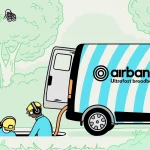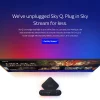New nbn XG.Fast Broadband Tech Trial Delivers 8Gbps via Copper Lines
A new trial of the future XG.FAST technology, which could one day replace Openreach’s forthcoming G.fast based ultrafast broadband service, has beaten last year’s BT trial by pushing a peak aggregate speed of 8000Mbps over 30 metres of twisted-pair copper (BT achieved 5.6Gbps at a similar distance).
As a quick recap, XG.FAST is being designed (it’s not yet an official standard) to follow-on from the more familiar G.fast technology that will next year be rolled out across the UK by BTOpenreach (details). Both technologies follow a roughly similar deployment approach to the current ‘up to’ 40-80Mbps VDSL2 based Fibre-to-the-Cabinet (FTTC) service that dominates our market.
Advertisement
In all of these scenarios a high capacity fibre optic cable is run to a local distribution point (usually a street cabinet or smaller node on top of a telegraph pole / underground etc.) and then the remaining connection into homes is done via the existing twisted-pair copper cable. The copper connection is where VDSL2, G.fast or XG.FAST comes into play.
Last year saw BT and Alcatel-Lucent conduct a joint test of the future XG.FAST (G.fast2) technology, which managed to deliver aggregate broadband speeds of 5.6Gbps (Gigabits per second) over just 35 metres of copper cable and 1.8Gbps at 100 metres (here). At 35 metres you’d get a little over 1Gbps+ on G.fast (falling to c.700-900Mbps at 100 metres) and easily max out VDSL2.
By comparison the latest lab trial, which was conducted by Nokia and nbn in Australia (North Sydney) during September 2016, achieved a peak aggregate speed of 8Gbps over 30 metres of twisted-pair copper (similar to BT’s network) and 5Gbps over 70 metres. Clearly an improvement, although this is unsurprising as the technology is still very much in its R&D phase.
We should add that Deutsche Telekom conducted a similar test with Nokia earlier this year, which achieved an aggregated bandwidth of 11Gbps+ on two bonded pairs of Category 6 cable at 50 meters in length (NOT comparable to the above test). But they also ran similar tests using standard drop cable, which achieved aggregate rates that exceeded 8Gbps over 50 metres.
Advertisement
Dennis Steiger, CTO of nbn Australia, said:
“Although XG.FAST is still in its very early stages of development the lab trials we have conducted demonstrates the huge potential that the technology offers.
XG.FAST gives us the potential ability to deliver multi-gigabit speeds over copper lines – virtually on a par with what is currently available on Fibre-to-the-Premises – but at a lower cost and time to deploy.
While our core goal remains to connect 8 million premises to the nbn by 2020 we are keeping a close eye on new technologies like XG.FAST to ensure we can meet the future bandwidth demands of Australian broadband users.”
Unlike today’s default VDSL2 setup in the UK, both G.fast and XG.FAST contain improvements to cancel out troublesome interference as standard (e.g. Vectoring, G.INP, SRA, FRA) and that’s good. Mind you there is a big caveat in all this. While VDSL2 can harness 17MHz+ of spectrum, G.fast needs 106MHz+ and XG.FAST gobbles up to a hefty 500MHz (at that level there’s also the risk of interfering with other devices).
The extra spectrum is all well and good, but it also means that in order to get the best speeds you have to bring the fibre optic cable increasingly close to homes (the signal weakens very quickly on longer copper lines) or you drop the top speed significantly in order to tolerate a greater distance (i.e. reach more premises for less cost). Check out our Broadband Technology page for more.
At present BT hopes to deliver around 300Mbps over 300-350 metres of copper line with G.fast and this should give them a reasonably good level of coverage, on the cheap, when deploying from the side of existing PCP street cabinets. However it remains to be seen what upper tolerances XG.FAST could cope with before the signal breaks down, but it’s clearly happiest when it can sit much nearer to your home than G.fast (i.e. XG.FAST may need a much more fibre rich FTTdp deployment).
We should add that Nokia was recently chosen, alongside Huawei, as one of the two key equipment partners for BT’s roll-out of G.fast in the United Kingdom. However we’re unlikely to see XG.FAST anytime soon; it still has a long road of development, trials and standards setting processes to travel.
Advertisement
Mind you the most future proof approach would simply be to forgo all this extra complexity and roll-out a pure fibre optic (FTTP/H) network, assuming somebody is willing to pay for that and conduct it without damaging the altnet competition outside of dense urban areas.
Mark is a professional technology writer, IT consultant and computer engineer from Dorset (England), he also founded ISPreview in 1999 and enjoys analysing the latest telecoms and broadband developments. Find me on X (Twitter), Mastodon, Facebook, BlueSky, Threads.net and Linkedin.
« Ofcom to Open 700MHz Digital TV Band for Mobile Broadband by Q2 2020


















































Comments are closed